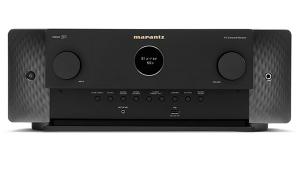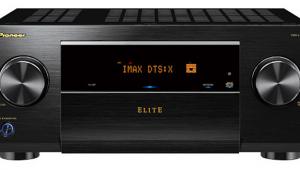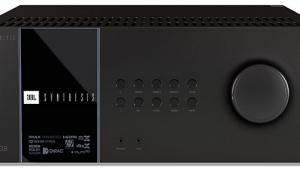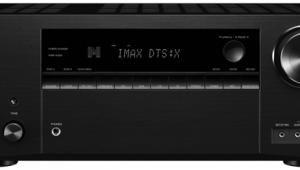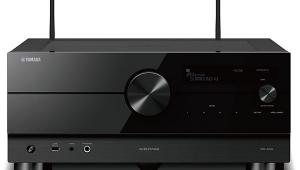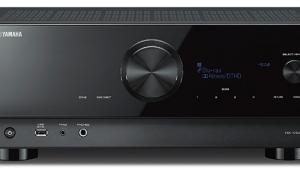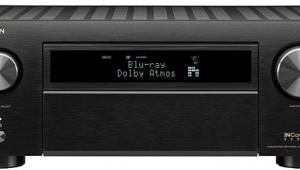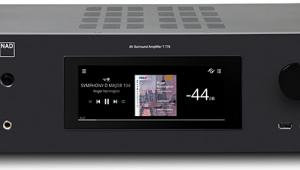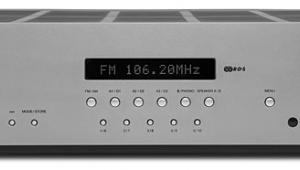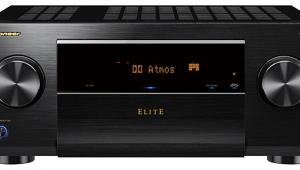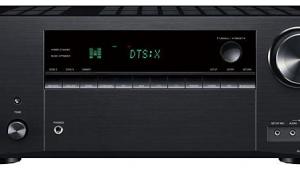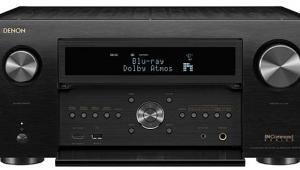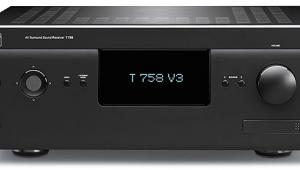Denon AVR-4520CI A/V Receiver Page 2
 Room Correction Symbiosis
Room Correction Symbiosis
What was most unusual about this receiver was the integral role of room correction. Normally I find a tradeoff between imaging and comfort. With room correction on, effects and voices are often better defined; with room correction off, my overall comfort level usually rises. My preference often varies from one piece of content to the next. But with this receiver, keeping Audyssey MultEQ XT32 on was nearly always the right decision with movies and (more remarkably) with music. Not only did it deliver the best imaging and soundfield integrity; along the way, it also induced little or no fatigue, unlike most receiver and room correction combos I’ve tried up to now. With it off, the Denon presented a top end that was reticent compared with that of most same-priced receivers I’ve heard. Turning it on was like switching on a lamp: Hello, fidelity! The AVR-4520CI’s voicing interacted with XT32 to produce close-to-ideal results in my room.
The Cold Light of Day (with DTS-HD Master Audio soundtrack) is a standard-issue espionage-and-deception thriller starring Henry Cavill, the 2013 incarnation of Superman. There was nothing XT32 didn’t improve here: vocal timbre and clarity, imaging detail, soundfield construction, even the overall balance of frequencies (something I’ve found room correction to often worsen). Room-corrected bass was deliciously powerful. Pounding house music in a nightclub was stimulatingly steroidal. The receiver delivered dynamics worthy of a top-line model, and this was an intrinsic quality, independent of XT32.
In No One Lives (Dolby TrueHD), some characters are sadistic criminals, and then there are the bad guys. I’m citing this as the one exception to the rule: Using XT32 made voices too top-heavy, effects too blisteringly bright, and music too sizzling. Switching to Direct mode (which bypassed XT32) made mids and highs easier to take. My cumulative experience with this receiver and XT32 led me to believe the fault was with the content. The only way to make this movie listenable was to blunt its leading edge by reverting to the receiver’s less crisp, un-room-corrected sound.
Aftershock (DTS-HD Master Audio) tells the story of tourists caught in a Chilean earthquake and its bleak, harrowing aftermath (definitely not for kids). For this evening demo of a soundtrack with aggressive low-frequency effects, I invoked Audyssey Dynamic EQ and Dynamic Volume with the latter at its lowest (Light) setting. The sub action—in a series of cheerful nightclub scenes as well as during the disaster itself—was still enough to rattle my fingertips when I held them against the driver. Here the components of the Audyssey suite pulled together as a team, with Dynamic Volume subtly reshaping the dynamic envelope, Dynamic EQ shoring up surround envelopment, and XT32 improving bass, imaging, and overall clarity. Yet I never had the feeling that I was listening to heavily manipulated sound. What I heard was clean, proportionate, vivid, and absorbing.
The Clocks Explode
The 5.1-channel mix of Pink Floyd’s The Dark Side of the Moon arrived in 96/24 PCM on the Blu-ray Disc included with the Immersion Box Set (it’s also available in the more affordable, decade-old SACD edition). This is as close to perfection as demo material ever gets. The room-corrected version was vividly imaged, spatially precise in its delineation of sounds and instruments, and full of tone color, with no gratuitous zing at the top end—“just the facts, ma’am,” my notebook says. Trajectories of natural and synthesized effects practically left neon trails as they moved front to back and side to side. The increased prominence of bass guitar in recent mixes paid off in the receiver’s room-corrected bottom end, balancing the naturalness of voices in the midrange and reverberant guitars soaring over the top. Turning off XT32 didn’t make side one (as people of my generation call it) any richer—just more vague. Only with “Money” did the Denon’s unvarnished sound offer any improvement, allowing my room’s modest natural reverberation to sweeten the sound.
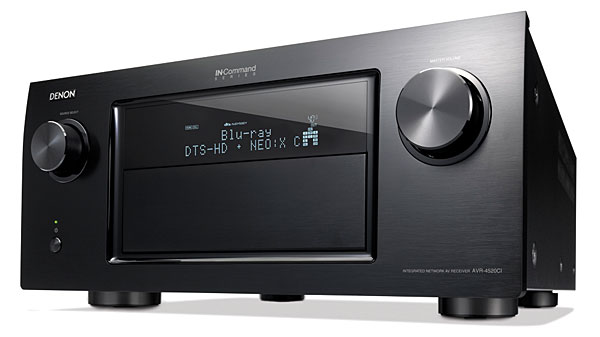
Time for an AirPlay demo or two. I’ve been slowly upgrading my music library’s ripped CDs to include more Apple Lossless material, such as Vladimir Feltsman’s disc of Bach’s Goldberg Variations. Glenn Gould’s celebrated traversals add up to 38 and 51 minutes; Feltsman plays the repeats indicated in the score, producing a 79-minute epic. It’s beautifully recorded, too, and the Denon fully captured both the instrument’s timbre and its interaction with the room it was recorded in, including a short but delectable decay. When I turned off XT32, the decay all but vanished.
Even MP3 files at 256 kilobits per second via AirPlay sounded good, in the no-longer-available ReverbNation download of Jan Akkerman’s The Beauforthouse Austerlitz Live. (I’m hoping it will follow the rest of his catalog to iTunes.) I liked the way the receiver rounded off the harsh digital edge of the heavily processed acoustic guitar while illuminating and shading the undulating dynamics of the trumpet. Only when the trumpeter upped the volume and reverb did the lossy files’ treble become too hard and grating for the Denon to tame. But the receiver made this recording sound listenable for a larger percentage of the time than I’ve previously heard.
I’ve never known a receiver to have such a symbiotic relationship with its room correction. So often, room correction seems an afterthought, or even a compromise; here it is a vital ingredient that improves nearly all content. Without XT32, this receiver would rate a solid four stars in the performance rating, with solid dynamics and a gentle but not especially detailed top end. With XT32, it’s a five-star product with a fine tonal balance and some of the best imaging I’ve heard in my room. I ended up splitting the difference and making it 4.5 stars. The Denon AVR-4520CI and Audyssey MultEQ XT32 seem literally made for each other.
